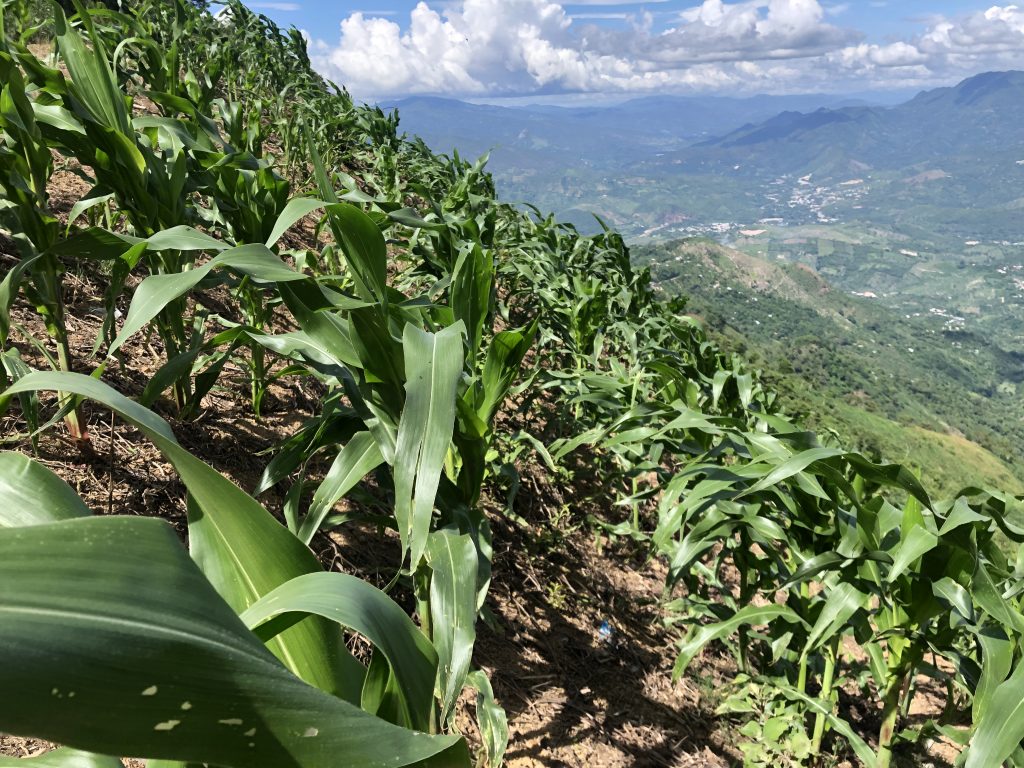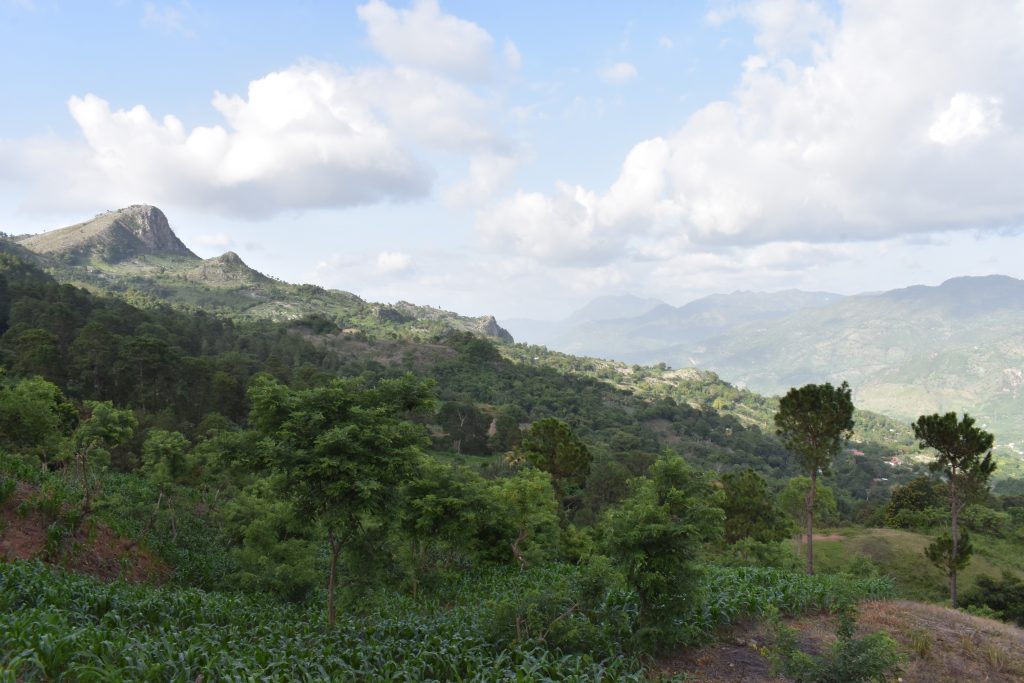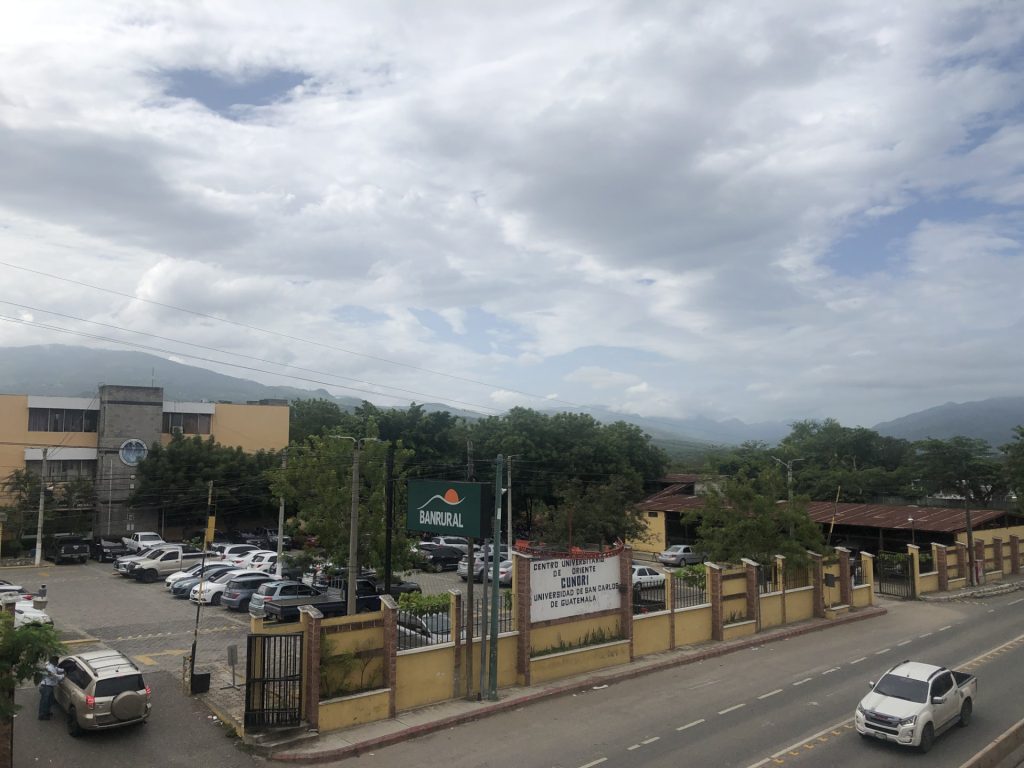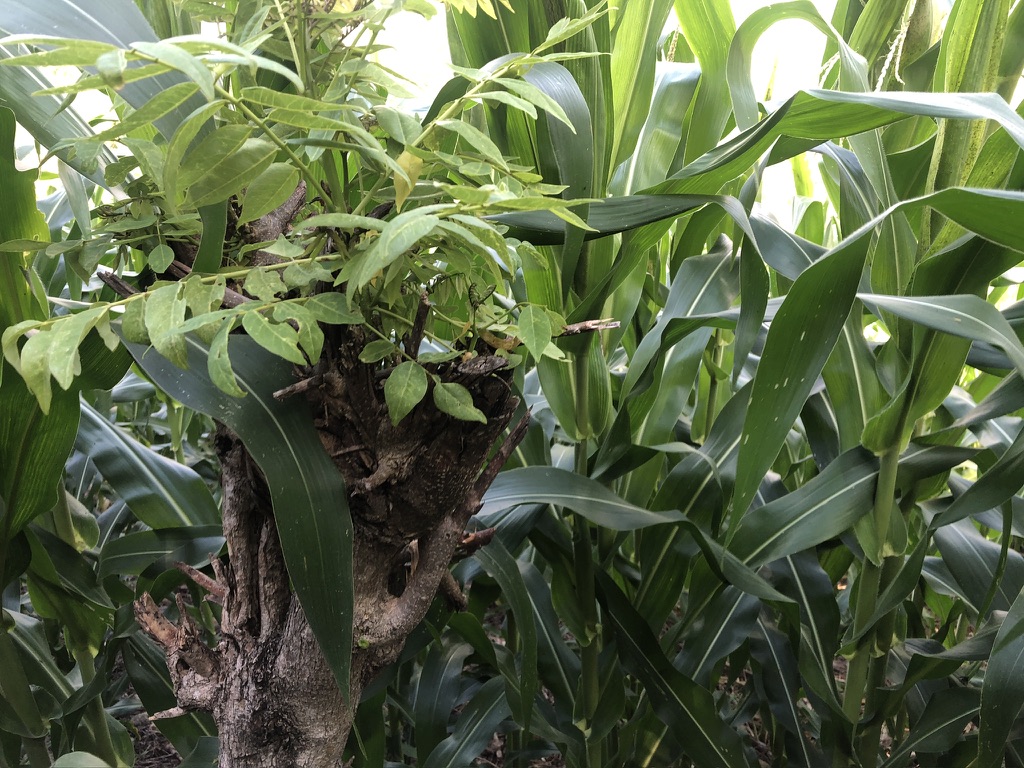By Audra Koscik

In Central America, there is a region of land called the Dry Corridor. This region covers much of Guatemala, Honduras, El Salvador, and Nicaragua and is defined by a single rainy season that occurs from around May to October.
The Maya Ch’orti’ Indigenous people have lived in the Dry Corridor for centuries. These communities have long adapted to arid conditions. However, over the past twenty years or so, the rainfall patterns have changed significantly, consequently impacting these areas’ agricultural systems.

Local researchers have worked on supporting impacted communities. For instance, scientists at the Universidad de San Carlos, Centro Universitario de Oriente (CUNORI) in Chiquimula, Guatemala are working with local farmers, nonprofits, and residents to understand the impact of the changing weather patterns and possible solutions.
This research works to prioritize the community’s well-being. Nery Galdámez Cabrera, coordinator of CUNORI’s Research Institute, shares that the Institute strives to “address areas of research that arise from consensus with Guatemalan society, especially people in rural areas.” Research is conducted in and shared with the communities impacted. “Research is continuous, to validate results and thus motivate communities to work with the ideas generated, with the hope of achieving community development goals,” says Galdámez Cabrera.
This kind of community-oriented work is familiar to Claudia Irene Calderón, a teaching faculty in the Department of Plant and Agroecosystem Sciences, who has collaborated with CUNORI scientists for years. “A lot of the work I do is in conjunction and alongside the Indigenous peoples in my home country Guatemala and in Mesoamerica,” Calderón says. “What we want in our group is to ground our work in community engaged scholarship to try to coalesce into practices that can be beneficial for the communities.”
Centering communities is a key tenet of Calderón’s field of work: agroecology. Agroecology looks at food systems holistically, from the tiniest microbes to the social structures guiding the food system. Agroecology supports small-scale and local production, diversification of farms, reduction of external inputs, and the revival of ancestral practices. The goal is to help communities achieve food sovereignty.
CUNORI is involved in many projects in Chiquimula that support more sustainable agriculture and food security. This kind of work sparked the curiosity of Chris Lewis, a doctoral student Calderón co-advises. Lewis has worked locally and globally investigating topics such as climate change and pollution. He is in the environment and resources program housed in the Nelson Institute for Environmental Studies, and his educational interests center on how to build thriving food systems in a changing climate, especially internationally.
Lewis’s interest in CUNORI’s work was a good match. Part of CUNORI’s mission is to cultivate global collaborations. Galdámez Cabrera shares that CUNORI is dedicated to “connecting with organizations and entities that carry out research, among them, local and international Universities.”
Lewis worked with his co-advisors, Calderón and Matthew Turner in the Department of Geography, and researchers at CUNORI to create a plan that would fulfill his academic requirements and align with CUNORI’s work. CUNORI provided generous resources, and the Center for Integrated Agricultural Systems (CIAS) and the Latin American, Caribbean and Iberian Studies Program (LACIS) awarded Lewis grants that allowed him to conduct international fieldwork. For his thesis, Lewis is now collaborating with CUNORI and UW-Madison to develop research on how to help address climate change’s effects on agriculture in Chiquimula.

CUNORI has already done extensive work with farmers and community members. For instance, the university is a key participant in Chiquimula’s Mesa Tecnica Agroclimatica, or “agroclimatic roundtable.” These roundtables bring together researchers, farmers, and people from nonprofits to share farming recommendations based off the predicted climate for the next three months, says Lewis. CUNORI has also done research focused on understanding what practices Chiquimula farmers use to respond to climate change.
Summer of 2024, Lewis traveled to Chiquimula to begin his preliminary research. “The goal overall was to build relationships both with CUNORI and with communities and farmer organizations. And also to just be a listener and learn as much as possible about what people’s perspectives were, both in terms of what’s happening related to climate change – what folks are doing about it, what they think about it – and also, to the extent possible, what kinds of research would be useful for me to try to contribute to,” Lewis says.
On his preliminary trip to Guatemala, Lewis worked under the supervision of professors and staff in CUNORI’s Department of Environmental Management, Department of Agronomy, Research Institute, and Extension Unit. With their guidance, he went on crop field walks with farmers, conducted interviews, and attended community events.
Through this work, Lewis learned of many changes in climate impacting farmers in Chiquimula. To begin with, the rainy season often begins much later than it used to. “Historically, the rainy season begins in May,” Lewis says. “Historically, people planted maize in early May with the expectation that rain would come within a few weeks and that the maize would be able to grow based on that.” However, in 2024, the rainy season started quite late in June.
Periods of drought are becoming more frequent. “The ‘canícula’ is a dry spell in the middle of the rainy season which has always existed to some degree,” Lewis says. “But they’ve gotten longer and harsher, with a more severe lack of rain, and this past year, from what I understand, was a pretty severe one as well.”
When it does rain, the rains are harsher. “Across the rainy season, there’s less predictable rainfall and more rain coming in larger rain events which makes it harder to use the water,” Lewis explains.
The change in climate impacts farmers in Chiquimula. “The farmer has some points of control, and those are when they plant – when they put the seeds in the ground – and when they harvest,” Calderón says. “But with these erratic patterns of climate, the times when they are planting are now different. It’s not raining when they were expecting, so there’s more uncertainty.” If the farmer plants and the rain does not come when expected, the whole crop dies, Calderón says. “The implications are very dire.”

Farmers have been managing water scarcity for many years in Chiquimula. This knowledge helps farmers respond to the changing rainfall patterns. One practice many farmers have used is a form of agroforestry based on Maya Ch’orti’ agricultural knowledge. It uses nitrogen-fixing Gliricidia sepium trees, which are frequently pruned and used as mulch in farm fields. This helps conserve moisture, improve soil health by building organic matter, and reduce erosion by covering soil. It is sometimes referred to by the name “Kuxur Rum” or “K’uxu’rum.”
Another strategy some farmers use are trenches referred to in Spanish as “acequias” or “zanjas de infiltración.” Ditches are dug between crop rows to capture water and allow more water to infiltrate into the soil, rather than run off the landscape. As such, these trenches can also help prevent soil erosion.
Scientists at CUNORI are interested in understanding the impact of climate resilient practices. “Other research at CUNORI is looking at some of these most common practices for responding to climate change and trying to quantify what some of the impacts on soil are, as well as on soil moisture – so measuring nutrient content, measuring water retention, things like that,” Lewis explains. “And that’s definitely an area where there might be strong potential for more collaboration.”
Now, Lewis is reviewing the data and interviews he collected while in Chiquimula. The direction of the research is guided by these preliminary data, the perspectives of the communities involved, in alignment with CUNORI’s vision.
The final goal is to have collaborative research that CUNORI can share and implement. Kerim Ronaldo Orellana, coordinator of CUNORI’s Extension Unit, says, “We hope that we can put the results of the study that Chris conducts in practice through the Extension Unit and take them to rural communities.” Orellana shares, “For the Extension Unit, our dream for this study with Chris and the University of Wisconsin is to define actions that the Extension Unit and other departments can take to support development and evaluate results in the short, medium, and long-term.”
